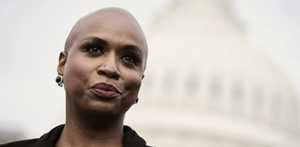Is a Bald Head for Women a Symbol of Power?
 In all the talk of “the slap” that has gone on since the Oscars; in all the soul-searching prompted by that break from the norm, its aftermath and what it could mean not just for the Smiths or the Academy but for comedy, culture and gender writ large; in all the important medical discussions it engendered of alopecia, not to mention the complex role hair has played in Black history — there has been one constant underlying it all: the powerful symbolism of the bald female head.
In all the talk of “the slap” that has gone on since the Oscars; in all the soul-searching prompted by that break from the norm, its aftermath and what it could mean not just for the Smiths or the Academy but for comedy, culture and gender writ large; in all the important medical discussions it engendered of alopecia, not to mention the complex role hair has played in Black history — there has been one constant underlying it all: the powerful symbolism of the bald female head.
Like all the politics that swirl around women’s bodies, the shaved head is both a magnet and a trigger. It inspires a complicated stew of prejudices, fears, stereotypes and sensitivities — whatever the reason for the baldness in the first place.
It was only four years ago that X González, the Marjory Stoneman Douglas High School student then known as Emma, last made shaving your head as a woman a national talking point as a face of #NeverAgain. How far we have not come since then. Hair, or the lack of it, is still a public issue.
That is in part because it is, literally, public. It is the most obvious expression of self, of gender, of subversion; of conformity, seduction, aggression, rebellion. It is immediately visible, impossible to ignore. And thus it is a key variable in shaping the perception of the external gaze, be it male or female.
If, as Malcolm Gladwell wrote in “Blink,” we all make snap judgments about one another all the time, then one of the first cues we use is hair. Mr. Gladwell said the thesis of his book was actually inspired by his decision to let his own hair grow out into a fuzzy corona — and the way that new do changed people’s reactions to him. (In his case, he thought, it led to racial profiling.)